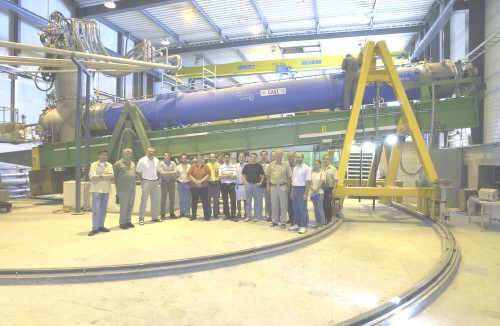An experiment built from components recycled from other experiments has put new limits on the properties of particles that might be the "dark matter" that makes up about 25% of the Universe. The CERN Axion Solar Telescope (CAST) was built to search for exotic particles called axions that might be produced inside the Sun.

Although CAST did not see any axions, it improved the existing limit on the coupling between axions and photons, which is related to the mass of the hypothetical particles, by a factor of five for masses below 0.02 electron volts (arXiv.org/abs/hep-ex/0411033).
Axions are one of the leading candidates for dark matter, along with supersymmetric particles called neutralinos. They were first proposed explain why the strong interaction, unlike the weak force, does not violate charge-parity (CP) symmetry.
Axions are thought to be produced in the Sun when thermal photons scatter from electrons and protons in the solar core. Theoretical models and astrophysical observations constrain the mass of the axion to values between a millionth of an electron volt (eV) and a few eV. The detection of axions would represent further evidence for new physics beyond the Standard Model of particle physics.
If axions exist the strong magnetic field in CAST should convert axions produced in the Sun into X-ray photons. To produce such a field the CAST team recycled a test magnet that had been built for the Large Hadron Collider (LHC) at CERN. This magnet, which is 10 metres long, is capable of producing a field of 9 Tesla.
The telescope observes the Sun for around three hours every day – through one end at sunrise and the other at sunset – and points away from the Sun for the rest of the day to measure the background (figure 1).
An axion signal should appear as an excess of X-ray photons above the background in three different X-ray detectors when the Sun and magnet are aligned. Parts of the X-ray detection system were originally built for the ABRIXAS space-based X-ray telescope and have now been recycled.
So far the CAST collaboration has analysed data taken between May and November 2003, and is currently analysing data taken under improved conditions this year. Next year the team plans to make the experiment more sensitive at higher masses by filling the detector with a buffer gas (figure 2).
The CAST collaboration includes physicists from CERN and 14 other laboratories in Canada, Croatia, France, Germany, Greece, Russia, Spain and the US.




